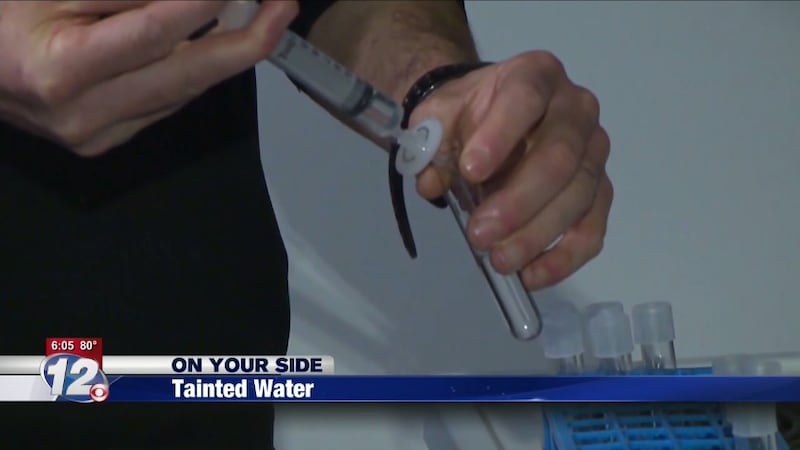Professor investigates the lead tainted water in Denmark

Thursday, Nov. 2, 2017
(News 12 at 6 O’clock)
DENMARK, S.C. (WRDW/WAGT) -- Dr. Marc Edwards began testing the water in Denmark nearly a year ago. He found very high levels of lead in some of the homes but it’s not enough to grab the attention of the federal government. A familiar problem he says many rural towns like Denmark are up against.
"I need to clean this sink out I thought I cleaned it out,” said Pauline Brown as she walks to her sink.
Meticulously, Pauline brown washes each dish.
Pauline describes her process, "Then what I do is I take the water here and I rinse the glass out."
"You do this every time?"
"Yes ma’am,” replies Brown.
For the last ten years, she's rinsed her dishes a second time with someone else's water.
"I need to rinse it out again."
"Why do you need to rinse it again?"
"Because the water is bad."
She began to notice the brown smelly water nearly a decade ago and....
"Sometimes when I wash it smells like sewage oh yeah. It smells it do."
...Began collecting water samples.
"Do you know what they call me? Ms. Denmark and doo-doo brown."
"Because of the water?"
"Because of the water, yes."
Jars of samples...
"This is twelfth month 2012. Seven at night. See that on the bottom?"
....followed by binders full of newspaper clippings, doctor's notes, and test results.
Years of concern-
"I’m afraid. I'm afraid."
-documented.
"Is there a problem in the water here in Denmark?"
"Yes there is."
In 2010 DHEC found elevated levels of lead and manganese in her home. The same year the agency issued a consent order to the city correct water issues. Two years later DHEC rated the city's water as unsatisfactory and gave recommendations for correcting the deficiencies.
Dr. Marc Edwards said, "There are some citizen scientist there that made a very compelling case that the water in Denmark has not been meeting federal law and they have some medical concerns that seem justified."
Marc Edwards is the Virginia Tech professor who helped uncover the water problem in Flint, Michigan. Nearly a year ago brown ed him to investigate the water in Denmark.
"So far yes we did identify some lead problems."
Brown's home is one of several where he found elevated levels.
"We did a random sampling which means you probably won't find the worst case homes. We had 12% percent over and that's worse than you want."
But not bad enough to grab the attention of the federal government.
The EPA prohibits lead levels higher than 15 parts per billion or ppb, however, up to 10% of homes in a community can have levels that high.
"If you do the science math 12% is not much higher than 10% to say the city's results are wrong. It's close."
Brown is in the 12% in Denmark living with elevated levels of lead in their water. Some of her samples were over 300 ppb that's more than twenty times more than regulatory limit.
"I’m still using cream on me. I'm still itching and I try not to cry. I don't."
"These results are the kind of typical results for what we are seeing around the county but to make the claim you're breaking the law you need many more homes above the action level."
In February of this year, DHEC gave Denmark’s water an overall rating of satisfactory.
But the rating is not satisfying brown.
"Don't let the children water drink water in Denmark because the water is bad here."
Because there is no 100 percent "safe" level of lead in drinking water, only acceptable levels.
Dr. Edwards still has some testing left to do in Denmark- including testing the city's wells and the elementary school which he plans to do next week.
He says high lead levels are the result of aging infrastructures old pipes. A lot of small towns like Denmark struggle financially to upgrade its water system. He says the best way to gain attention from legislators is to act as citizens scientists like Ms. Brown collect samples and call your state house.
In June Denmark received a nearly 400-thousand dollar grant to upgrade its water system.
We will keep you updated on Dr. Edwards’s findings.














